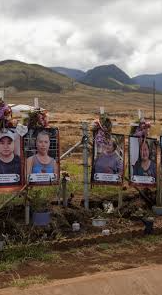
Report Unveils the Origins, Response Failures, and Consequences of the Catastrophic Maui Blaze
The devastating wildfire that ravaged the Hawaiian town of Lahaina in August 2023, killing 102 people, is the subject of multiple investigations, as officials seek answers about its origins, the emergency response, and the aftermath. A recent report from the Maui Fire Department and the U.S. Bureau of Alcohol, Tobacco, Firearms and Explosives (ATF) provides a deeper understanding of what went wrong before and during the tragic event.
The fire, which remains the deadliest in the U.S. in over a century, began early on August 8 when a live power line fell, sparking a blaze that rapidly spread through brush near a large subdivision. Firefighters initially responded to the scene, only for the fire to rekindle later that day, with investigators attributing the reignition to strong winds and potentially the intervention of firefighting equipment.
In the months prior to the fire, the Maui area had seen no significant measures taken to reduce wildfire risks, despite the same region experiencing previous fires. A flash drought left the landscape dry, and warnings of high winds were issued well in advance, with forecasters raising alarms about the impending danger. However, emergency preparations were deemed inadequate, and there were no evacuation sirens to alert residents when the fire escalated.
As the fire spread, the loss of power and communication networks hindered residents’ ability to receive emergency alerts or contact loved ones. Police attempted to warn people door-to-door, but roadblocks and gridlocked traffic complicated evacuations. Some residents had to take matters into their own hands, navigating around barriers to escape. Tragically, many lost their lives while trying to flee, either in vehicles or while attempting to survive in the ocean, seeking refuge from the flames.
The toll of the disaster surpassed that of the 2018 Camp Fire in California, with 102 fatalities reported, including people aged between 7 and 97. Two individuals remain missing, and the effects of the fire continue to be felt by the survivors and the wider community.
In the aftermath, several lawsuits have been filed by Lahaina residents, with Hawaiian Electric, Maui County, and the state of Hawaii named as defendants. A proposed $4 billion settlement to compensate victims is currently pending, as legal battles over insurance claims threaten to complicate the process.
Beyond the legal and financial challenges, reports from various agencies highlight significant gaps in the response and preparedness for such a catastrophic event. The Hawaii Attorney General’s office commissioned a three-phase investigation into the incident, focusing on key failures, while other studies suggest ways to reduce the risk of similar disasters in the future. Reports stress the importance of creating firebreaks, using fire-resistant materials, and improving communication and equipment for first responders.
The Lahaina wildfire stands as a stark reminder of the devastating consequences of unpreparedness and mismanagement in the face of growing environmental threats.











